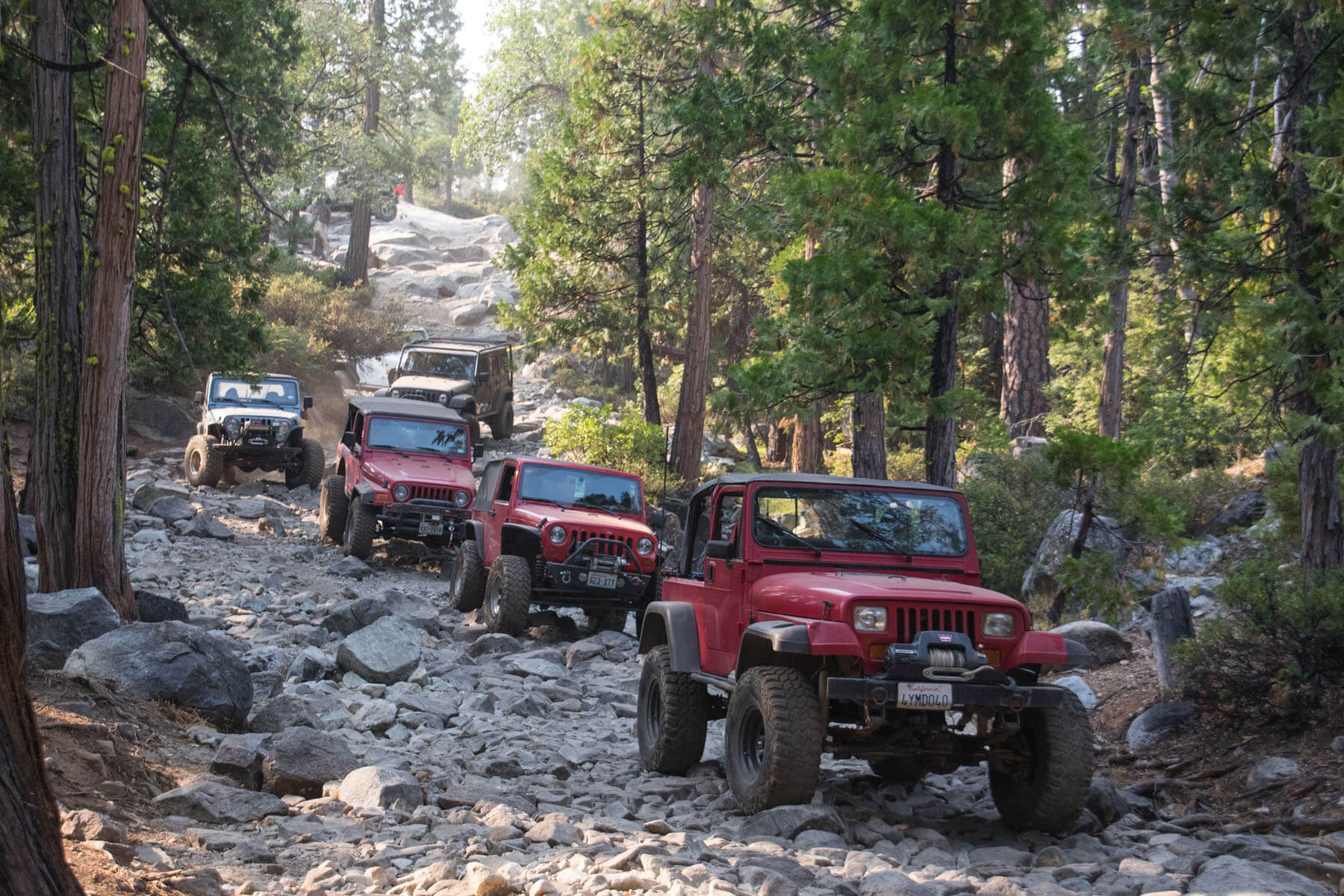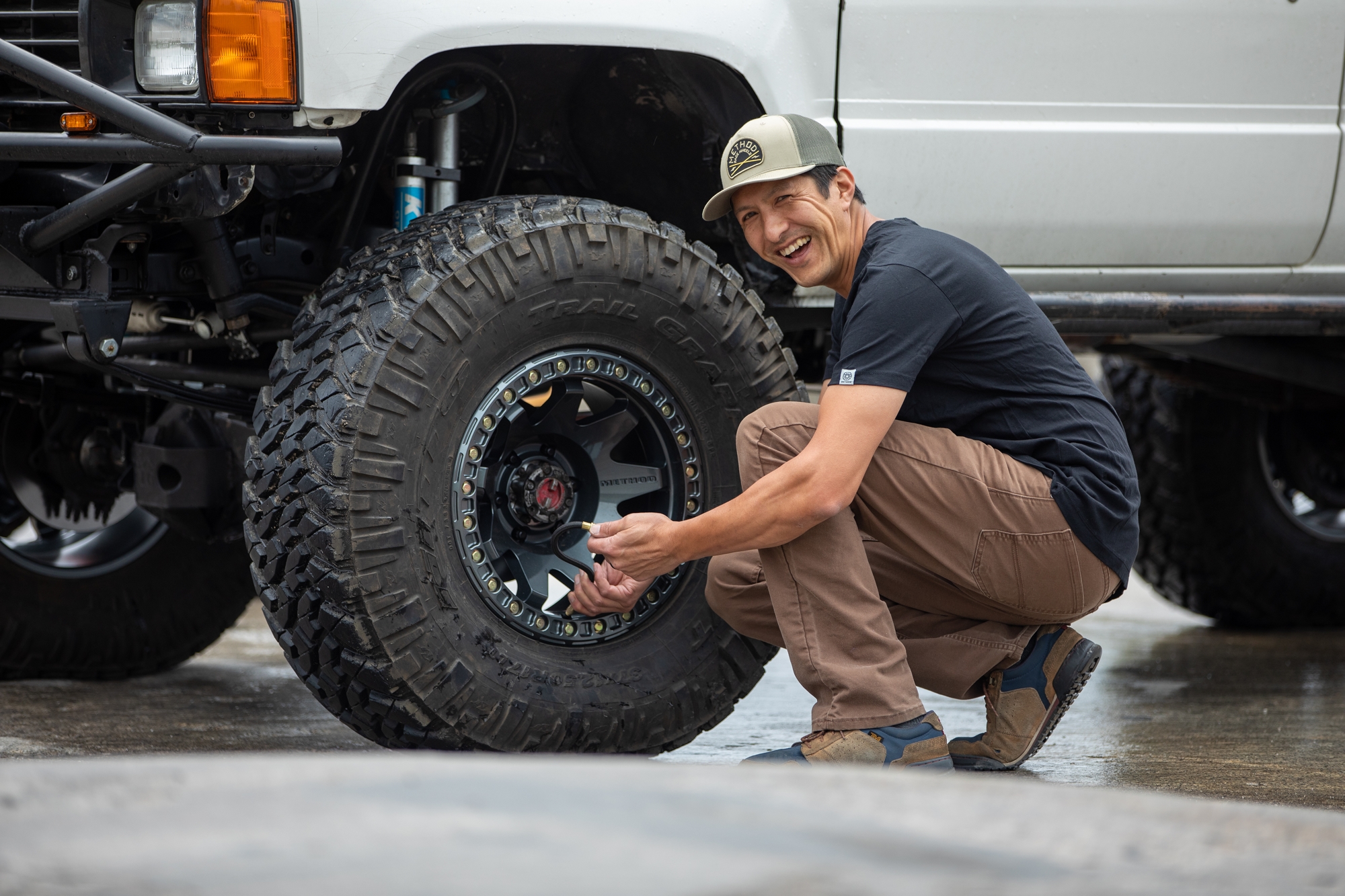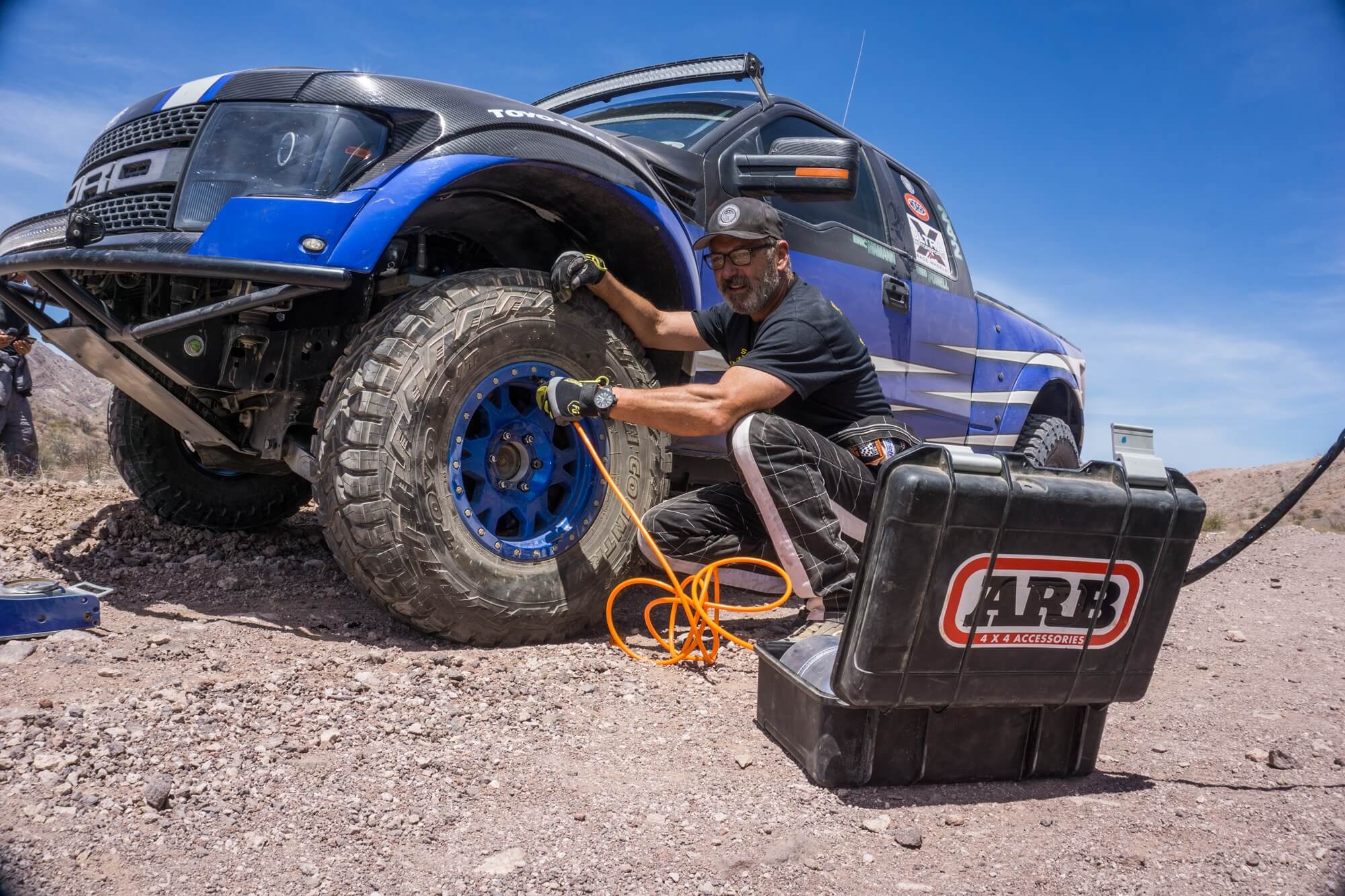
Looking for tire and wheel accessories? You’ll find it all right here on 4 Wheel Parts, so you don’t need to waste any time searching for the tools that we describe in this article.

Why Air Down Your Tires?
Tires grip the surface with what’s known as a contact patch. The contact patch is a square to rectangular patch that forms where the tire is pressed down onto the surface by the vehicle’s weight. For driving on roads, your vehicle will come with a recommended tire pressure that ensures the correct size of the contact patch to ensure that handling and braking are optimal while minimizing fuel consumption and reducing tire wear. Tire wear can occur when driving on under-inflated tires, which can even lead to blowouts, as the under-inflated tire flexes more, generates more heat, and causes increased degradation.
However, what rings true for the road doesn’t matter on the trails. You aren’t going to be cruising at 70mph with your eye on fuel economy when you’re on the trails. What’s more important to you is to have a good time, stay safe, and not get stuck. This is where you need to air down your tires in order to traverse certain kinds of surfaces. Let’s look at some instances where you need to air down your tires, as well as by how much from their normal recommended on-road pressure.
Dirt roads and moderate-level trails
When you encounter dirt roads and trails of moderate difficulty with washboard surfaces, reducing your tire pressure by around 25% is an excellent formula for a decent blend of traction, capability, and ride comfort.
Rock crawling
When you’re rock crawling, you want your tire to be able to flex, as well as grip smooth or slippery rocks by deforming around them. That’s why the recommended deflation figure for this activity is 35% from normal pressure. You’ll get a wider contact patch that offers better grip.





2